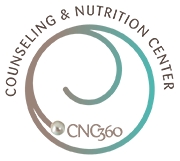Complete recovery from an eating disorder means many things, but integral to the process is the healing of someone’s relationship with food. Eating disorders often result in people feeling that food is an enemy—something to be feared and mistrusted, even when it is desperately desired. Healing from the disorder involves re-discovering the capacity of food and eating to nourish well-being, rather than (as is feared) betray it. It involves re-instilling pleasure in the experience of choosing and eating foods, and re-establishing confidence that these choices and experiences contribute to health and happiness.
It’s my belief that certain attitudes towards food and eating support this process of healing, and this three-part post is the first in a series of posts discussing these Healing Concepts.
The Struggle (To Trust Our Food) Is Real
We live in a culture that tends to polarize important issues as a way of drawing attention to them, and food and eating are no exceptions to this. The media is full of messages about Right and Wrong ways to eat, and we are encouraged to be ever-vigilant about hundreds of different aspects of our eating experience—everything from calories and portion-sizes, to potential food intolerances, and genetically-modified foods. It’s an overwhelming and anxiety-provoking environment in which to try to develop confidence and pleasure as an eater, but it is exactly these qualities that recovery-oriented individuals need in order to be successful. Adopting the stance of “All Foods Can Fit” (aka “There Are No Good Foods or Bad Foods”) is the key to navigating this nutritional challenge.
I’m going to discuss three ways in which the concept of “All Foods Can Fit” helps to heal the relationship with food and eating, and the first one is this:
All Foods Can Fit” challenges the tyranny of nutritional hyper-vigilance.
Human brains are wired to recognize and stay focused on perceived threats—it’s a survival mechanism for our species. But what happens when food—a substance necessary for survival—comes to be seen as a threat? It’s common for people to report that their eating disorder started with the intention to eliminate just a few “unhealthy foods”—like sweets, or sodas, or snacks. Over time, however, they noticed the restrictive urges picking up momentum, as more and more foods came to be characterized as “bad.” Not surprisingly, as more foods and eating situations came to be labeled as threats, they found themselves spending more time and energy worrying about the bad foods, how to avoid them (or perhaps, the guilt of eating them). Taking foods out of the category of “threat” gives people permission to stop worrying about these foods, and to explore them instead. In doing so, people can discover for themselves whether and how a given food is supportive or unsupportive for them. The experience of making food choices stops being about fear and guilt, and starts being about of self-knowledge and empowerment, and that is tremendously healing.
Elle, a client struggling with binge eating, was talking recently about the emotional impact of “legalizing” formerly forbidden foods:
“When I stopped focusing on whether the food was good or bad, and arguing with myself about whether I could or couldn’t have it, I finally had the space to notice that it does nothing for me. It doesn’t change anything. It doesn’t solve any of my problems. I know now that I can eat emotionally if I really want to, but I’m feeling less pulled to do it because I’m clear that it won’t make anything better.”
When Elle was able to take her focus off the rules and the guilt, she could pay attention to her own actual experience of using the food, and that, ultimately, was what helped her to move towards recovery.
Next time: “All Foods Can Fit” Part Two—The Key to Adequate Nourishment

